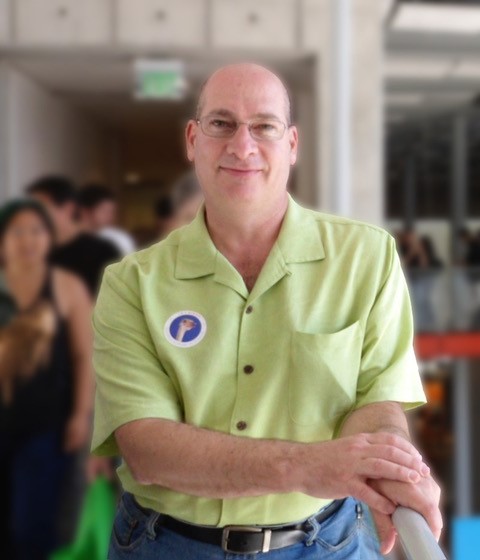 In November, the Integrated Lighting Campaign interviewed Steve Mesh, Lighting Design Educator and notable industry leader, to hear about the challenges hindering the adoption of connected lighting systems, as well as the exciting opportunities and trends for network lighting controls. He regularly contributes educational content and training materials to the Lighting Controls Association. He attended Parsons School of Design and has been a lighting designer and educator for 38 years. He serves on several organizations and committees developing national energy standards and training programs for the lighting industry.
In November, the Integrated Lighting Campaign interviewed Steve Mesh, Lighting Design Educator and notable industry leader, to hear about the challenges hindering the adoption of connected lighting systems, as well as the exciting opportunities and trends for network lighting controls. He regularly contributes educational content and training materials to the Lighting Controls Association. He attended Parsons School of Design and has been a lighting designer and educator for 38 years. He serves on several organizations and committees developing national energy standards and training programs for the lighting industry.
Tell us a little about yourself.
At the Parsons School of Design, my lighting teacher was Jim Nuckolls, one of the 13 founding members of the International Association of Lighting Designers. I struck it out on my own as a lighting designer at a very young age, so that was a really great start in the industry. I have been teaching for 37 out of the 41 years I’ve been working as a lighting designer. I’ve had a lot of experience teaching classes at Lightfair, in design schools, and elsewhere. In 2008, I moved to San Francisco to become the resident lighting expert at PG&E’s Pacific Energy Center, teaching lighting controls and other topics. After a while I realized that I could expand my training beyond just California, so 10 years ago I decided to go out on my own again, and now I train all over the country, from Boston to Honolulu and sometimes even abroad. It’s extremely satisfying seeing when students are able to grasp what I am teaching them and apply it to their own projects.
What are some of the greatest obstacles to the market-wide adoption of connected lighting systems?
The single greatest obstacle is lack of awareness and education. There’s a lot of resistance to luminaire-level lighting controls (LLLC) and networked lighting in the industry, mainly because there’s a perception that it is not very cost-effective. The thinking is that if you have sensors and controllers in every fixture, that it’s a lot of equipment, and therefore it’s got to be a lot of money. We’re also battling this perception of complexity of the installation of networked lighting controls.
There’s also a lack of synchronicity and coordination between the different groups of people responsible for implementing networked lighting controls – like building owners, lighting designers, specifiers, engineers, installers, and contractors. Better coordination can help facilitate the adoption of networked lighting systems. There are a lot of barriers to entry in the market—if we can lower those barriers to adoption, we’re halfway there.
How do you help educate others on the value and feasibility of networked lighting?
The perception is that networked lighting controls are the pinnacle of controls, and are therefore the most complicated. The irony is that they’re actually less complicated than if you have to figure out how to use 20-amp room controllers with three relays on a large project. In my two-day hands-on class for Sacramento Municipal Utility District, students were able to wire and commission three networked lighting systems by the end of the class. When they do this, they realize … ‘wow, this is really not rocket science.’ None of my thousands of students in hands-on controls classes have had any problems making these systems work, and they leave feeling very empowered. Another great outcome is that utilities have seen a higher adoption of their incentive programs after these classes.
Tell us about notable awards or projects you have worked on.
Thirty years ago, I received an award for a project I completed at the Palm Court of Idle Hour – formerly a historic Vanderbilt mansion—in Dowling College in Long Island, New York. The relighting of this historic renovation won an award from the International Association of Lighting Designers. In the nineties, I received another award from the Electric Power Research Institute for an energy efficient project completed at Brower Commons – a 1,000-seat dining hall at Rutgers University in New Jersey. The improvements reduced the load by 70 percent and doubled the light levels using some pretty major controls.
What is the greatest opportunity for networked lighting controls?
Some people may be surprised to hear that there’s a lot of opportunity for using networked lighting controls to mitigate the spread of Covid-19. From disinfecting UV-C luminaires to occupancy sensors, networked lighting controls (and associated luminaires) provide the infrastructure and features needed for contact tracing, Covid-19 exposure mitigation and more. For example, facility managers could be alerted when too many occupants in a space present a challenge for social distancing guidelines. There’s also a great opportunity to use networked lighting for inventory tracking and maintenance.